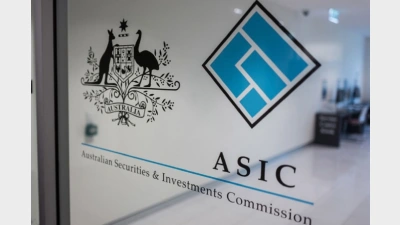(August-2004) Rebuilding after the inferno
APRA started life on July 1, 1998, with a strong commitment to its mission to promote financial safety and an ambition to be at the global cutting-edge in developing the integrated regulatory model. A little over two-and-a-half years later, HIH Insurance, one of Australia’s largest general insurance companies, collapsed, on APRA’s watch.
The HIH failure was a body blow to a fledgling institution which, from the outset, prided itself on its professionalism and the dedication of its staff. APRA had to quickly regain its feet, dust itself off and press on with its objective of promoting prudent business behaviour and risk management by the financial institutions it supervises. Faced with the daily demands of supervising around 3,000 institutions in deposit-taking, life and general insurance and superannuation — not counting thousands more small APRA superannuation funds — a “time out” to regroup was not a luxury available to it.
APRA’s performance as a prudential supervisor came under very searching examination in the HIH Royal Commission. One of the immediate consequences of the report of Justice Owen was the change in APRA’s governance structure. On July 1, last year, a new three-person executive group took the place of APRA’s previous board and chief executive officer. This new structure is intended to provide clearer and sharper lines of accountability and avoid what Justice Owen described as “dissonance and lack of clarity” in the previous governance arrangements.
When the new executive group arrived at APRA, we found an institution that was focused on its mandate, professional in its standards and skilled and knowledgeable across the four prudentially regulated sectors. Bruised, obviously. But morale and motivation high, nonetheless.
We gave two strong commitments to the community:
n that we would work to restore confidence in APRA as a vigilant, vigorous and effective prudential regulator; and
n that we would ensure that the lessons from the HIH failure and other supervisory incidents are fully absorbed.
The lessons of HIH
Three key lessons were identified, and they have implications for APRA well beyond our supervision of the general insurance industry. They involve powers, processes and people.
The first lesson is the importance of a robust framework of legislation and prudential standards that provides the prudential regulator with appropriate powers. When HIH failed, the insurance legislation then in force, the Insurance Act 1973, was obsolete and behind internationally accepted best practice. It created a simple and non-interventionist prudential regime. There were, for example, virtually no early intervention powers such as the ability to require an increase in capital, a standard tool in a prudential regulator’s armoury. According to the two reports, the Act appeared to engender a mind set within APRA (and its predecessor) that APRA had few regulatory options to deal with concerns about an insurance company, other than the ‘thermo-nuclear option’ of appointing an inspector when commercial solvency was under threat.
The second lesson is the need for APRA to have an effective and targeted supervisory process. One that identifies critical warning signals of an institution’s deterioration and ensures that these signals are investigated and acted upon promptly. From its inception, APRA put considerable intellectual effort into developing an integrated regulatory approach that would be an improvement over the industry-specific practices it had inherited. In early 2000, it introduced a new methodology for supervising large and complex institutions, involving a “consultative” off-site regime supported by on-site visits in specialist risk areas and attestations from directors and auditors. This less intrusive approach was based on the fundamental premise that the large institutions with which APRA was dealing were sophisticated, well managed and well controlled.
This premise proved flawed. The Palmer Report considered that APRA’s supervisory methodology made it difficult to recognise an institution whose characteristics were not consistent with this premise. The methodology did not assist front-line supervisors to identify early warning signs of problems, nor did it provide guidance on when more senior management in APRA needed to be involved.
The third lesson is the critical importance of having adequate staffing levels, skills and experience in the prudential regulator to enable it to carry out its mission.
APRA sought to move quickly to a fully integrated model, but clearly underestimated the magnitude of this task. In particular, it faced ongoing problems in attracting and retaining supervisory staff, problems exacerbated by the location of APRA’s head office in Sydney rather than Canberra.
Prior to APRA’s establishment, around 550 staff were engaged in prudential supervision and associated corporate functions in the 11 predecessor agencies. By the time of HIH’s collapse, APRA’s staff numbers were below 400. Integrated regulation was expected to deliver cost savings and greater efficiencies, particularly in corporate functions, but at these lower staffing levels APRA was, in hindsight, cutting into bone. In the process, it lost a considerable amount of corporate memory — by the time of HIH’s collapse, only 45 per cent of staff who joined from predecessor agencies were still with APRA. It also lost a “critical mass” of general insurance experience.
Revitalising APRA
APRA has been following a conscious strategy of extensive but controlled change, aimed at making it a much stronger and more effective prudential regulator. That strategy was being put into place by the previous APRA board and senior management, and the new executive group has been keen to boost its momentum.
The strategy, not surprisingly, is built around powers, processes, people and punch. It involves:
n stronger statutory and prudential powers;
n better early warning systems of emerging distress in financial institutions;
n better staffed and more experienced supervisory and specialist teams; and
n institutional will to take the actions necessary to protect the interests of beneficiaries.
I shall discuss each of these strategic themes in turn.
Firstly, the Government has been supportive of APRA’s mission through a series of regulatory reforms which have reinforced the prudential framework and provided APRA with stronger powers.
In superannuation, a more modern and robust regulatory framework came into effect yesterday [the Financial Services Reform regime], built on a universal licensing regime for APRA—regulated trustees as well as new regulations and operating standards. In the deposit-taking sector, we now have power to disqualify unfit or improper directors and senior managers and to remove auditors. And across all the prudentially regulated sectors, we have improved powers to collect and publish the statistics we need to perform our job to the highest standard.
Secondly, APRA has strengthened its early warning systems — its radar, so to speak.
In the last couple of years we have introduced a more rigorous and sophisticated system for risk-rating financial institutions and determining appropriate supervisory action. The risk-rating process requires our supervisors to make an assessment of the overall risk that an institution may fail (taking into account a number of risk factors), and the relative impact that the failure of the institution would have on the financial system. We have now rated more than 1,300 entities accounting for close to 99 per cent of APRA-supervised assets.
The risk-rating of an institution helps us determine supervisory efforts. We have four supervisory stances, and our involvement steps up in intensity if the re-rating of an institution takes it from a ‘Normal’ stance to ‘Oversight’ or ‘Mandated Improvement’. Institutions in Mandated Improvement are not at immediate risk of failure but they exhibit one or more unacceptable risk features. These institutions must have a sensible improvement plan and they are typically subject to firm intervention, often via formal directions or enforceable undertakings.
At the end of the scale, institutions in “Restructure” need new capital, management or ownership, or possibly all three, and these institutions would be subject to vigorous supervisory intervention. These are the institutions in which APRA has lost confidence that financial promises to beneficiaries will be met. Under this new supervisory methodology, the larger a financial institution, the earlier would APRA intervene if risk issues emerged that threatened the institution and financial stability more generally.
We are confident that this new supervisory methodology has helped APRA lift its game. We now have more accurate and consistent risk analysis; we now have more consistency and balance in supervisory response. We are building up a track record of properly weighted intervention that has reversed the path of some larger entities from Mandated Improvement back into Oversight or Normal. Under our previous supervisory approach, we were unlikely to have intervened as early, and possibly not as successfully.
Thirdly, APRA has been building up its supervisory resources and skills. The new executive group has given particular priority to the rebuilding task. From the low of a little below 400 when HIH collapsed, staff numbers have risen to around 508 currently, and we have budgetary support to take this total to around 570 by the end of June 2005.
We are focusing our recruiting efforts on individuals with extensive and relevant experience in industry and the professions, and we have been successful in attracting a number of high-calibre new staff. For the first time since our establishment, the average length of service of staff within APRA has begun to increase.
We have recognised that integrated prudential regulation is more about establishing teams of people with the right mix of skills to deal with large and complex institutions, than about expecting supervisory staff to be able to apply their skills across each and every one of the prudentially regulated industries.
Recommended for you
The super fund is open to the idea of using crypto ETFs to invest in the asset class, but says there are important compliance checks to tick off first.
ASIC has launched civil penalty proceedings in the Federal Court against one of the super trustees wrapped up in the Shield Master Fund failure.
Industry associations have welcomed the Treasurer’s review into the superannuation performance test and called for targeted changes that would enable investment in certain assets with strong long-term performance.
Super funds are strengthening systems and modelling member benefits ahead of payday super.











